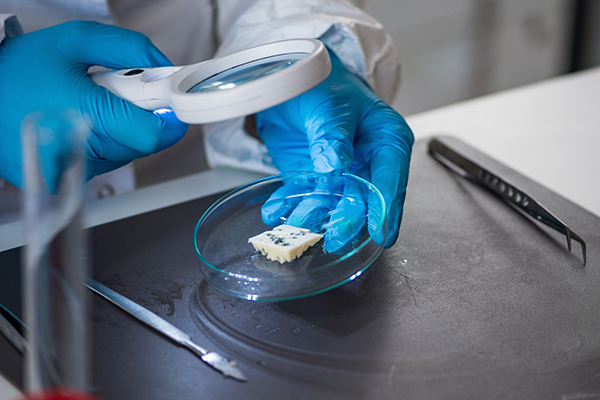Achieving Food Safety Vision 2020
Once you have a vision of what your 2020 Food Safety Program should be, it is time to implement that vision. Some of you may already have a great food safety program that just needs some tweaks. Others may not have a formal food safety program. Whatever your situation, here are some ideas for achieving a good food safety vision.
First, take small steps in implementing your plan. Workers may resist massive changes to their work routine, so start with a small, but important practice. Your first emphasis might be on handwashing if you observe that employees are just not doing enough handwashing or not doing it correctly. After all, that may be the most basic and important behavior for employees. This time of year, the flu virus is rampant so you can use that as one rationale for increasing the frequency of handwashing.
Second, be a role model for food safety. I remember growing up with the adage “What you do speaks so loudly I can’t hear a thing you say.” In other words, the management team should practice what is preached and “walk the talk”. Because handwashing is fundamental, this behavior should be modeled. Every time a supervisor walks into a kitchen, that individual should wash hands. Every Single Time! Even if that person does not plan to handle any food and even if the visit is short, handwashing should be done. Taking the time to model this behavior reinforces that handwashing is important—and employees ARE watching.
Third, train employees on the how and why of following food safety practices. We don’t think training should only focus on what and how you want something done, but also on the why it is important. What is the link to food safety? What outcomes do you get if you implement or if you do NOT implement the behavior? Make it personal by connecting the dots of what could happen if there were a foodborne illness because safe food practices were not followed. Emphasize that the right way is the best way. The training can be an informal one minute reminder or a scheduled 30-minute session for everyone but the information should be consistent! See past blogs and webinars on this topic.
Fourth, follow-up with employees after training. Sometimes we train employees and assume that they will just go off and immediately put this information into practice. In reality, that does not happen. New procedures might require a change in routine or take more time. So the follow-up is important. Remember the term “active managerial control’? That means supervisors are actively involved in implementing the food safety program and holding employees accountable for following correct practices. We have also introduced the term “management by walking around”—managers must observe to make sure food safety behaviors are practiced and correct unsafe behaviors.
Fifth, reward good food safety practices. Rewards can be as simple as an “atta-boy/girl”, after all, everyone likes to be complimented on a job well done. Food safety should be part of performance reviews as well. You could even have a food safety award each quarter, including a small cash bonus. That would elevate food safety and, perhaps, make employees more aware of its importance.
The bottom line is that thinking about what you want to accomplish with your food safety program, and developing a plan will affect your bottom line! Food safety is as basic as food quality and cost control. All of these outcomes must be recalibrated from time to time. Making sure the 2020 Vision for Food Safety is practiced is an important element of an operation’s success. Risk Nothing!
READ MORE POSTS
Maintaining your Equipment: Is it the Missing Ingredient in your Recipe for Food Safety?
Although I am no longer in day-to-day operations, between our students and foodservice lab at the university and my volunteer activities in my local church, I keep a close hand in food production. This past week, I had the opportunity to lead a group of men at our church in preparation of a luncheon for 100 women who were attending a spirituality retreat. Over the course of the morning, I realized our main cooler in the kitchen was not functioning properly and was about 10˚F above the required temperature. While we do have a commercial kitchen, we do not routinely log temperatures, so when the unit started to malfunction is questionable. Even more concerning was not the lunch we were preparing for, but the dinner that was served the night before for 300+ families in the parish.
Contamination of Food: Let’s Get Physical
Earlier this month, we began a discussion about contamination of food. Our first blog focused on chemical contamination, but in this blog, I’d like to look at physical contamination of food.
Contamination of Food: Chemicals, Pesticides, and more, Oh My!
If you have followed our blogs, you have often heard us opine about food safety-related behavior and communication, food traceability, and other overarching food safety topics. We often don’t get into the weeds and discuss topics you may have learned about in your food safety training. But I thought we might circle back around and dig into a few of these topics for a few blogs. This month, I’d like to discuss food contamination, this blog will focus on chemical contamination of food and later this month, we will discuss physical contaminates.










